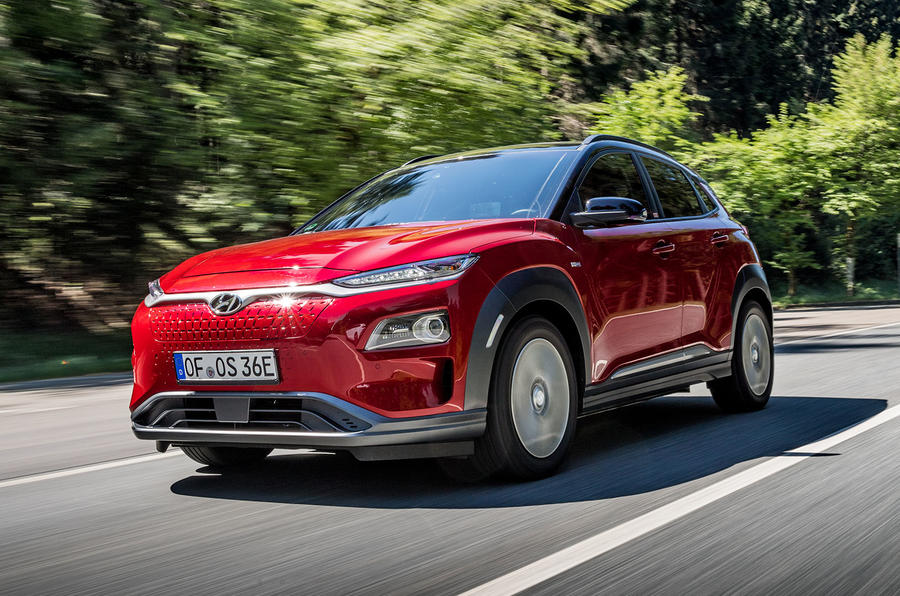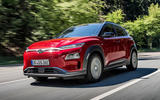The Hyundai Kona Electric is perhaps most simply described as the other battery-powered compact crossover SUV due to be arriving in UK showrooms in 2018.
Given the coverage generated already by the Jaguar I-Pace even before the car has been properly launched to the press, Hyundai might do well to grab more than a moment of limelight for the Kona Electric — a car that, while far from ordinary-looking, hasn’t got the razzmatazz of Jaguar’s design, the sheen of its premium brand, or quite that car’s performance appeal.
But, as a drive in a prototype on German roads has just revealed, the Kona Electric may well have more of what really matters to EV drivers than what Hyundai and Kia has delivered with their electric efforts thus far, or that its direct rivals offer: battery range.
The exact positioning of Hyundai’s second all-electric passenger car to market, after the Hyundai Ioniq, is still to be confirmed ahead of a UK showrooms arrival later this summer. What’s already clear, however, is that the Kona Electric won’t be priced like too many other compact crossover hatchbacks; company sources suggest they’re working hard to make the top-of-the-line version between £35,000 and £37,000 (before any purchase incentive).
So this’ll certainly be an expensive crossover hatchback in flagship trim, at least, and a fairly pricey compact EV to boot. But it’ll also be a relatively powerful one, with a 201bhp electric motor driving the front wheels and a lithium ion battery that, at 64kWh of storage, is a closer match for the battery capacity of a Tesla Model S than that in a Volkswagen e-Golf or Nissan Leaf.
For those who’d prefer it, Hyundai will also offer the car with 134bhp of motive power and 39kWh of power storage, very likely for a starting price well below £30,000 once the Government’s plug-in car grant has been accounted for.

What is the Hyundai Kona Electric prototype like?






















































Join the debate
Add your comment
Have you seen the Jag in real life
I have and sad to say it is not pretty. The rear end is more Juke than anything, and the windows are too small with too much metal in the sides. Plus it is priced at £65K to £85K on the day I saw it. The seats not very good, the driver set very far back, and the interior space not that good when you look at how large it is. sorry to slam Jag, I expected a lot and it fell short in my eyes.
This car, ok its not great looking but its price is a lot lower. If the range is good I may well be tempted.
Looks are subjective
Worth considering, this car's performance as well it's electric
It has about the performance of Golf GTE while being pure electric not hibrid. It would be possible to offer a cheaper pure electric version with lower trim level smaller battery and weaker electric motor. At least halfing the gap if not more between current variants of Kona and this particular electric variant. Clearly buyers soon shall have choice of around 30K to 30K plus electric cars with very acceptable range. That is probably not yet cheap enough for electric cars to take over the market - for that to happen they'd probably have to be available another 10K down the price range while still offering very reasonable range. That's probably another car generation away - but in another 10 years such cars have probably arrived.